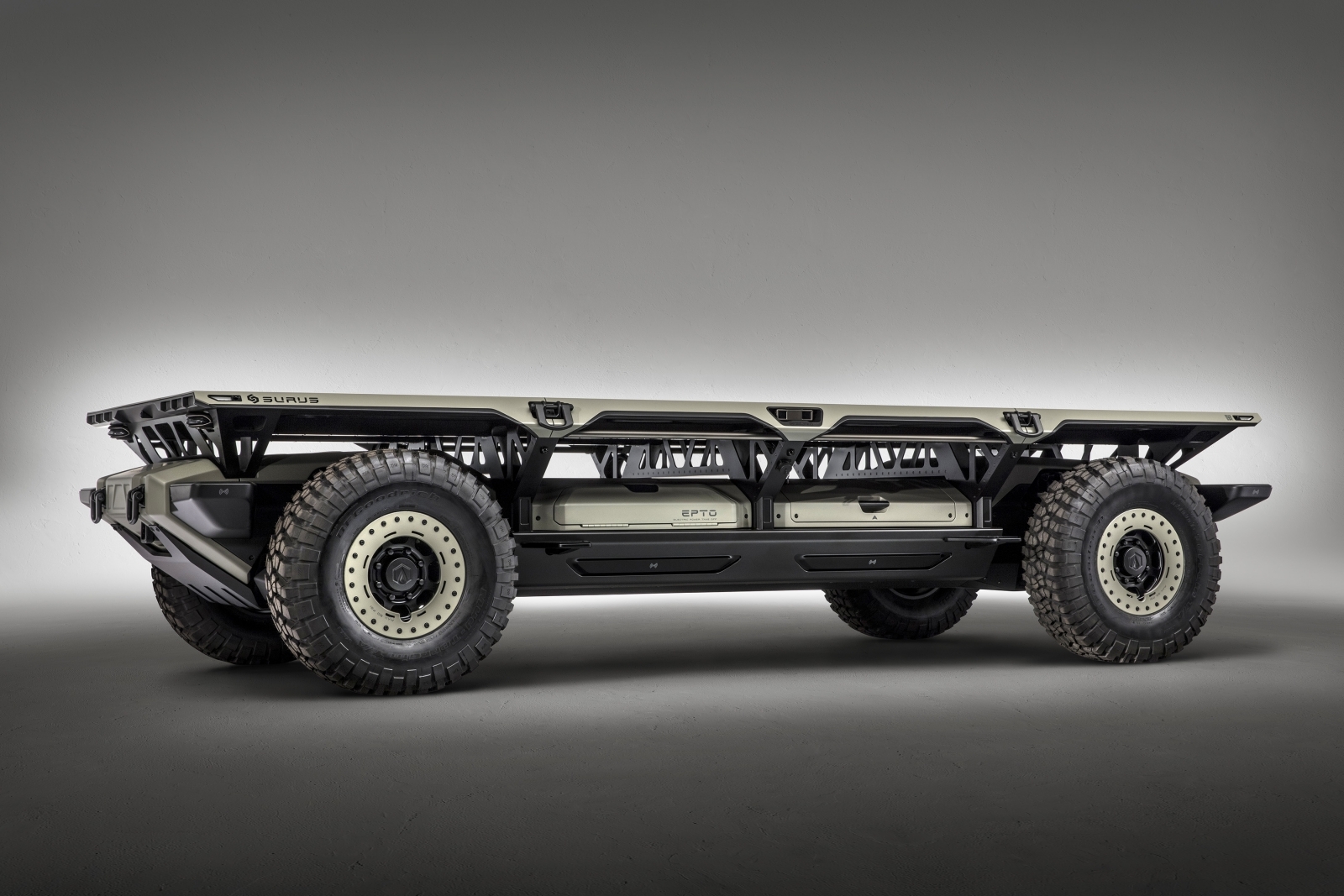GM to unveil hydrogen-powered self-driving truck platform that could work wonders in disaster zones
The SURUS will be powered by hydrogen fuel cells that will run electric motors, making it a zero-emissions system.





General Motors is working on a self-driving truck platform called the Silent Utility Rover Universal Superstructure (SURUS). The modular platform will have self-driving capabilities and will be able to run on unpredictable, off-road terrain, the company claims.
The vehicle will be unveiled at the Association of the United States Army (AUSA) from 9 to 11 October, says a release by the company.
SURUS will make use of GM's own Hydrotec fuel cell system and make use of a truck chassis system that is capable of offering high performance. The fuel cell system that will power the vehicle is said to be able to cover a distance of over 400 miles at once.
GM also says that it can be scaled up to be used in larger vehicles if needed. It can also be a part of a fleet of vehicles that follow a leader-follower configuration. Self-driving capabilities of the fleet will enable the vehicle to traverse off-road situations as well. The company will be presenting this tech to the Army because of the potential uses of the vehicle in the field.
Being noiseless and carrying a low heat signature, it reduces the risk of detection by enemies. The US Army Tank Automotive Research, Development and Engineering Center (TARDEC) have reportedly been in talks with GM to develop fuel cell technology and expand its future applications in the military.
Technical specs of the SURUS
- Two electric drive units
- Four wheel steering
- Lithium-ion battery system
- Hydrogen fuel storage system that cover 400 miles
- GM truck chassis
- Self driving capabilities over uneven terrain
The platform by itself has been built for commercial uses, but can be easily modified for military applications, notes the report. It could be used in many different ways from acting as logistical support to emergency, backup power generation and as plain utility trucks. Making use of autonomous trucks will also reduce the manpower required to transport goods between regions, notes the report.
Since the SURUS is powered by hydrogen, it can be refilled instantly and will not have to wait to get charged like electric vehicles. Hydrogen fuel vehicles also run clean, with their emissions being only water. The report notes that these truck platforms could be used for water production as well.
Running the platforms on electric motors also makes it possible to deliver high torque to all four wheels almost instantly.
This comes at a time when other makers of electric and self-driving trucks have already revealed their own versions of the long haul, autonomous, self-driving machines. Tesla's semi- truck, the "beast" was set to be revealed in October, but Musk has put the reveal on hold to focus on fixing "Model 3 bottlenecks and increase battery production for Puerto Rico." Tesla's semi will be shown on 16 November.
Tesla Semi unveil now Nov 16. Diverting resources to fix Model 3 bottlenecks & increase battery production for Puerto Rico & other affected areas.
— Elon Musk (@elonmusk) October 6, 2017
© Copyright IBTimes 2025. All rights reserved.





















